After a summer of massive protests and standing at the cusp of a significant Presidential election, Indian-American households are grappling with the American racial system like never before.
Written by Karishma Mehrotra This article was first Published on October 25, 2020 at – : https://indianexpress.com/article/express-sunday-eye/bringing-race-home-us-presidential-election-racial-system-6868519/

“We didn’t see ourselves as part of the Black movements or the problem. But we have actually been in the bubble that created it.” These words from my mother came on the heels of the largest race-related protests in the US neither of us had seen in our lives here. Her exposure to America’s race conversation, from when she immigrated in the 1970s, has been vastly different from mine – raised and born in this country. After years of trying to convince her that Indian Americans are a part of a racial equation in the US that they might not always see, I had suddenly heard a moment of unexpected recognition.
This watershed moment is a microcosm of this year’s intergenerational conversations in the Indian-American community, reckoning with their place in America’s racial system.
Memories still fresh from the George Floyd protests (the death of a 46-year-old African American man in Minneapolis, Minnesota, in May had sparked off massive protests across the country), Americans are awaiting the Presidential election next week (November 3). Even though this year may see the largest shift in the community towards the Republican Party, this summer also saw a surge of South-Asian solidarity events, marches and talks in religious circles, classical music groups, student associations, and Bhangra teams. Social media was replete with posters describing “How to talk to your Papa about Black Lives Matter for Father’s Day” and “How to make old folks listen”.
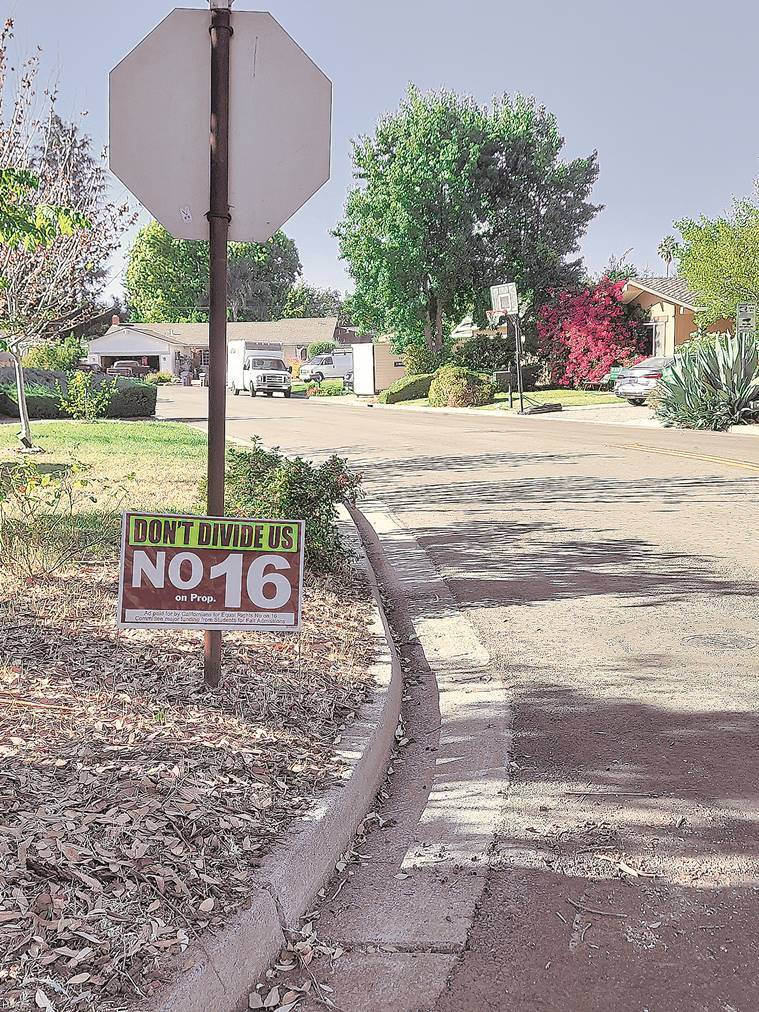
“Over the summer, I was talking to Indian families about the fact that we need to talk about anti-black racism, and, Meena, I’m sure you were, too,” said Vanita Gupta, former head of the Civil Rights Division at the US Department of Justice, appointed by President Barack Obama, to Meena Harris, Kamala Harris’ niece, in a recent webinar on South Asian voting mobilisation. “We have to not just speak outwardly and protest in the streets but sometimes it’s about looking inward at our own families. We are never going to be able to have true equality in this country until we recognise how we are so intertwined in this country’s history,” said Gupta.
Before 60-year-old Ravi (last name withheld on request) came to the University of Houston in 1982 to study pharmaceutical science, a family from Houston had visited his home in Hyderabad. “They told me that I have to be careful around Black people. As soon as I landed in New York, I had to give my baggage to a Black man. I was sceptical of him. I had created a mental image that you just can’t trust them, that all of them are bad,” he says.
Over time, Ravi recognised the stereotypes he was taught, but race was still not at the forefront of most family discussions until this summer. “My daughter said, ‘No Dad, we have to discuss this’,” he says.
Also read | Back-stories and chitti tales: Indian Americans on the US election campaign trail
After Shikha, Ravi’s daughter, moved into her parent’s place during the COVID-19 lockdown, protests began erupting across the country in May. “When my dad was questioning why the protests were violent, I had trouble explaining that this was an emotional response to a broken social contract,” says the 25-year old data analyst.
Shikha, who had begun to understand race relations in college, soon realised that the situation was “no longer about academic conversations or intellect”. She had to find mediums that would speak to her dad. “She showed me the Comedy Central guy – Trevor Noah. He really explained why people were angry. I shared that in my college WhatsApp group with Indians who are now in the US and told them that yes, the protests are causing problems, but now you can see their thought process,” Ravi says.
Shikha says she saw her dad have a “light bulb moment”. “I have known that Indian Americans are taught anti-blackness. But after these conversations, I see that it wasn’t out of bigotry that my dad had these views. It was pure ignorance,” says Shikha, who ended up rewatching several of her favourite race-focused documentaries with her parents. “I kind of forced my parents to watch the. But my dad began recommending it to his Indian friends!” she says, with a laugh. “She did open our eyes,” Ravi says.
Shikha knows her parents might not be on board with defunding the police or reparations. “I’ve decided to pick my battles. I can only talk about it so much,” she says. But, this summer, she felt that was “starting somewhere.”
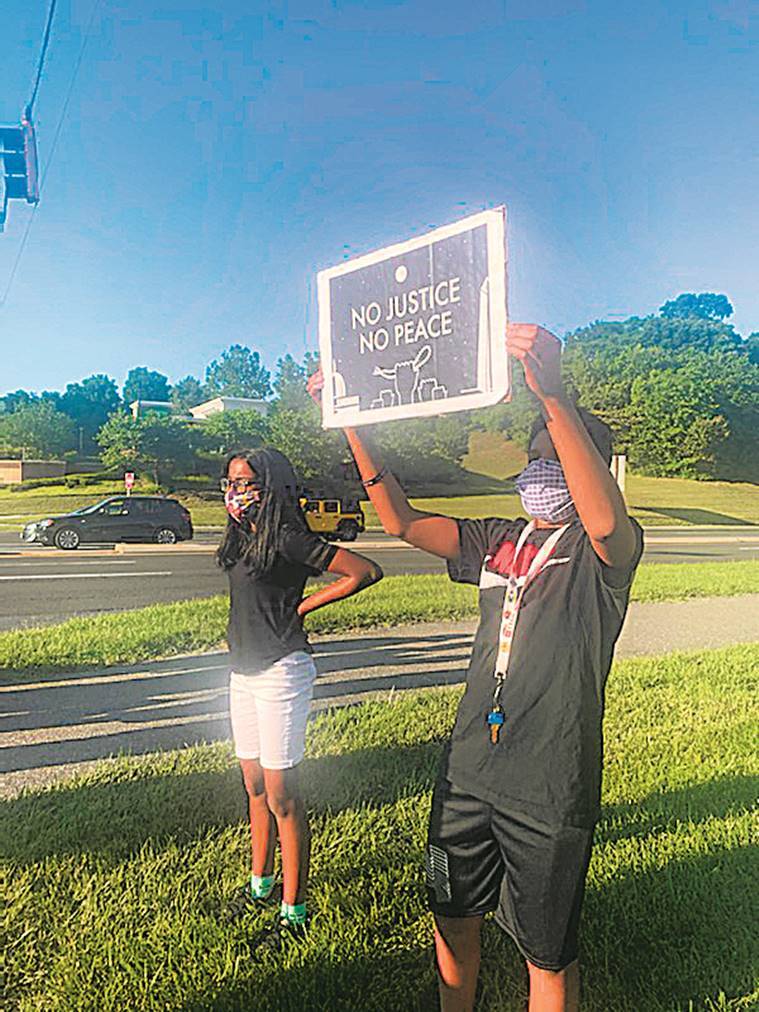
Two decades ago, Vijay Prashad, a South Asian historian and former Trinity College professor, wrote in his book The Karma for Brown Folk (2000): “I am a weapon in the war against black America. Meanwhile, white America can take its seat … surrounded by state-selected Asians, certain that the culpability for black poverty and oppression must be laid at the door of black America.” His book has now become rite-of-passage reading material for South-Asian Americans. In the book, Prashad wrote, “In the United States, the bulk of the desi community seems to have moved away from active political struggles toward an accommodation with this racist polity. The bargain revolves around the sale of the desi political soul in exchange for the license to accumulate economic wealth through hard work and guile … They live in America, but they are not of America.”
Prashad is sceptical that this dynamic will change anytime soon. “That dull, self-satisfied middle, between activists and the right, won’t get involved until there is a direct attack on Indian Americans from the right wing,” he says.
While Prashad remains pessimistic about collective action, many Indian-American families are beginning to feel a shift. In the 1980s, Maryland-resident Jocelyn Watson moved from Kerala. Her family never directly discussed race in the household. “We were just these immigrants here for the sole purpose of bettering our lives. But there were a lot of indirect comments. There was an underlying assumption of superiority.”
Also read | Will Trump-Modi’s courtship matter in November US elections?
In college, Watson met a Black man who later became her husband. “My parents had never said I couldn’t marry outside my race, but it was implied that I would marry Indian. When Roger and I got serious, my dad would make little comments. But never direct.”
Now with two children, 15 and 13 years old, Watson juggles many cultures in her home, but still tries to teach her kids that they don’t have to choose a side to identify with. The family attends a Black church and the children go to a predominantly Black school but Watson’s parents live nearby and look after the grandkids, feeding them Indian food. With the protests this summer and the election forthcoming, Watson said all three generations are talking about race head-on. “When Roger had conversations with the kids about what happened to him because of his race, there was just silence on their face,” she says.
Watson took her kids to numerous protests this summer, “not to scare them, but to make them understand, because the world sees them as Black children,” she says. For the first time, her parents began asking questions about race. Watson admits to feeling frustrated with her parents, who would often “minimise the situation”, asking why Black Americans have to be so angry and questioning the need to take the kids to demonstrations. “As Indians, we can absolve ourselves from this conversation. We’re a model minority. There is a sense that we did it and we’re still climbing the ladder, so why aren’t you and why are you still bringing up the past? At the end of the day, we don’t have the same historical trauma here as Black people,” she says.
In his book, Prashad speaks about Dinesh D’Souza, a Goa migrant in the US who argued in 1995 that the Asian American success story made the “crisis of black America” even more apparent. Prashad disputed the implication, stating that Asian American achievement in the US was not a matter of harder work or genetics, but more so a product of “state selection”.
In the late 1950s, the US was desperate for technical labour on the heels of the USSR’s launch of its satellite programme with Sputnik I and II and medical labour to staff the newly-created Medicare and Medicaid programmes. The government was also under severe pressure to deracialise policies after the Civil Rights movement brought much of the Jim Crow era under question. In this context, the country’s 1965 Immigration Act allowed in only a subset of immigrants. Between 1966 and 1977, 83 per cent of Indian Americans entering the US were professional and technical workers, leading to strong associations between intelligence, hard work and the Asian racial category. Before the pandemic, unemployment rates amongst Asian Americans (making up 5.6 per cent of the US population) was 3 per cent, while it was 6 per cent for Black Americans (12.7 per cent of the US population).
Shikha has been careful not to directly compare the discrimination her family has faced with the “systemic issues” facing the Black community. “I had to acknowledge my parents’ experiences but also explain the topic of generational wealth – that not everybody can do what my Dad did because not everybody has the same privilege.”
More recently, these issues of privilege and structural discrimination have come to the fore with affirmative action lawsuits, one of the most divisive topics in the Asian-Amerian community. “The only issue where the views of Democrats and Republicans seem to approach convergence is affirmative action in university admissions,” cites a survey of Indian-American attitudes by Carnegie Foundation, Johns Hopkins University, and the University of Pennsylvania, released on October 13. A slim majority (54 per cent) of Indian Americans support this measure, and party affiliation doesn’t seem to matter much. Half of Republicans support it, as do 60 per cent of the Democrats.
“I grew up around this topic in India, where there was a lot of animosity towards beneficiaries of caste reservations. I never understood what it meant and we were never taught to question things,” says Aparna Ghandari, a school counsellor in California, who immigrated from Hyderabad nearly three decades ago, when she was in her 20s. “After coming here, I took the time to read about it. We Indians take a lot of pride in meritocracy, which actually disguises the privilege that we don’t take time to deconstruct,” she says.
Since the 1970s, at least five lawsuits arguing against affirmative action in schools were initiated by White people. But two years ago, a high-profile federal lawsuit argued that Harvard discriminated against Asian Americans specifically.
A California proposition (a ballot referendum put up to a popular vote) this year would allow race to be a factor in public employment, education or contracting. It has reignited debates between those that feel race quotas harm certain Asian-American groups and others who believe the dedicated support for Black Americans is necessary to make up for historical and structural inequalities. Signs across the state read either “Don’t Divide Us” or “Opportunity for All”.
In a similar contention of identities, 15 per cent of Indian Americans said they were less enthusiastic to vote for Democratic nominee Joe Biden after he picked Kamala Harris as his running mate. Of those, 20 per cent said it was because she identified more with her Black roots than her Indian ones. Indian Americans have traditionally been largely Democrats.
Six years ago, in 2014, Michael Brown was killed by a police officer in Ferguson, Missouri, igniting the first phase of the Black Lives Matter (BLM) movement. At the time, Gauri Joshi remembers her feelings of anger at her parents for questioning the need to protest. It was the first time race had ever come up between the two generations, and there was very little room for agreement. “I remember feeling very defensive. But the conversation never really returned because, frankly, I didn’t have to worry about it,” says the 31-year-old. Internally, however, she began to realise the “casual racism” of her childhood; comments about Indians who were dark and associations between all Black people and crime. “It was never intentionally racist but it was so normalised I had never questioned it,” she says.
A couple of days after the Floyd protests popped up in her parent’s neighbourhood in New Jersey, Joshi’s father – who came to the US in the ’70s – brought up the conversation to her unprompted. “He said that he was really starting to understand how frustrated the Black community is. For the first time, there was real empathy. It was less about ‘this is their problem’ and more about how we have been complicit in this. I remember thinking that this time was going to be different,” she says. Joshi’s father was especially upset that a fellow immigrant, a Palestinian American, had called the police on Floyd. Joshi’s mother, though, seemed less willing to support the protests. In an attempt to bridge the knowledge gap, Joshi found an online resource in Marathi explaining the issue. “There is more inclination to have this conversation if there is less of a language barrier,” she says.
Joshi’s 11-year-old niece, meanwhile, learned about the protests on TikTok and began asking her which organisations she should donate to. “I wish I had that maturity when I was her age to be able to sympathise with people,” Joshi says.
This article first appeared in the print edition on October 25, 2020 under the title ‘Bringing race home’.
Related articles
Black Neighborhood is my neighborhood
Over the decades, I have lived amongst many different communities, in different parts of the world, with at least fifty different nationalities. However, until 2017, I had never lived in a majority African-American community. After being in the United States for 40 years, I debated about this move for more than one year, now that I live in the Black community, I am cherishing the same experience that I had in all other communities.
I was even elected as a Neighborhood Commissioner by default, as I voted myself for the vacant seat, but I yielded to another person due to my health at that time. My zip code is 20032, ward 7 of Washington, DC. The same ward Washington Mayor Muriel Bowser represents.
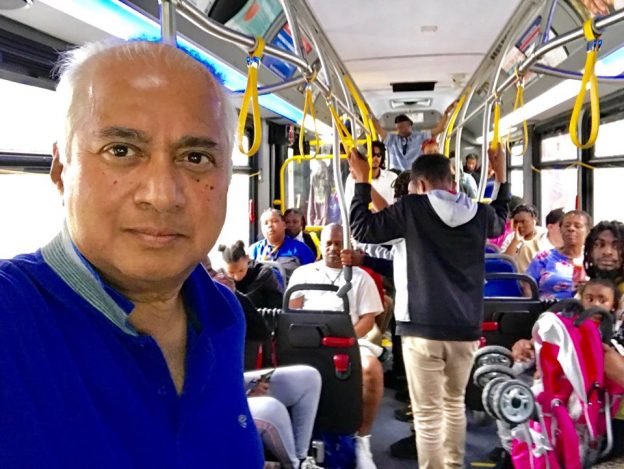
Much of my decision to move into a Black neighborhood is grounded into my commitment to building a cohesive America where each one of the 323 million of us feels secure about our faith, race, and ethnicity, and cultural, political, and sexual orientation. My idea of America is shaped by the vision of our founding fathers, President Lincoln, Mahatma Gandhi, Martin Luther King Jr, President Obama, and the Quran.
Many conflicts and phobias cloud us that prevent us from being cohesive with our fellow human beings. One way to get out of the cloud is to get to know each other. Being different is OK. The Quran’s wisdom in 49:13 is central to my commitment, research, and pluralism activism. God says that he has deliberately created us into different communities, nations, races, and by extension, different religions. By the way, the anthropologists have discovered in the last fifty years we all originated in Africa and spread out into different regions and created nations, and communities.
Each one of us is unique with our own thumbprint, eye print, DNA, taste buds, clothes buds, and philosophical buds. Then HE says, that uniqueness is likely to create conflicts, and the best ones among you are those who learn about each other. As we learn to respect the otherness of the other (my definition of Pluralism) and accept the God-given uniqueness of each one of us, then conflicts fade and solutions emerge. Much of this you will find in the book American Muslim Agenda available at Amazon, Google, and the bookstores.
Knowing each other is not a noble idea, or a God-pleasing act, it is the right thing to do; to live freely without fears, after all, our land is the land of the brave and the free.
How do we learn about each other and bust the myths if we don’t live as neighbors?
There was a time in the eighties in Dallas, Texas, my hometown when white folks were running away from their neighborhoods to escape from the African American ‘invasion’ of their communities. My question to them was, and remains, how far and how long will you keep running?
Each one of us seeks freedom and wants to live without fear, but what do we do instead? We double down on our neuroses. White folks run away from neighborhoods when blacks make the entry, and the black people give up on living with all others and go back to their flock where they are comfortable. The apprehensions never end. This is not good for anyone or America’s future.
Life has tested my faith many times. In 1985, I faced the wrath of homeowners in Rowlett, Texas. My homeowner friends became foes overnight because we contracted to build a new Ryland home for Jim and Mike, a gay couple in the Peninsula neighborhood. Eventually, the acceptance of their being a different type of couple came through education.
Back around 2005, I was on the Greater Dallas Home Builder’s Association’s government relations committee. We were appalled with the attitude of the City of Plano’s Planning and Zoning Committee. They were opposed to the zoning-in of apartments in the town as they wanted to keep the people with low income (Black people) out of the city.
Our question to them was: Where will the people who work at 7/11 live? Will they live near their workplace or way out someplace where they will be forced to further drain their income on transportation? Finally, they listened, and they zoned affordable apartments into the cityscape.
I had another experience that shaped my decision to move into my new neighborhood. In this case, Grand Homes took over the construction of Bent Tree Hills in North Dallas. Bent Tree home sales had dried up in the Texas sun as protesters publicly fought nearby against the construction of low-income (meaning Black) housing in the area and scared away would-be homebuyers. I was assigned to turn things around and appealed to the humble beginnings of each one of us; it worked.
Now, Muslims are treading on a similarly dangerous path of self-segregation by building “luxury ghettos” around mosques. It’s happening in places like Irving and Murphy, Texas.
I hope to use these experiences and observations to build relationships with those who differ with others in creating a cohesive America. This will be good for all Americans. As Mother Teresa once advised, “If you want to make peace, you don’t talk to your friends. You talk to your enemies.” To that, I add, gossiping among friends won’t change the equation unless you talk with the ones in which you have problems.
In 2015, I visited the Congress Heights neighborhood in Washington, D.C. and liked it. Before then, I had interacted with Blacks, but never really considered living in a majority Black neighborhood. Since I teach, preach, and write about pluralism, I said to myself that moving into the neighborhood could be a God-given opportunity to live by example.
Now that I am living in Congress Heights, one of the things that irritate me are the taxi and Uber/Lyft drivers who suggest to my visiting friends that this place is not safe. One of the drivers even waited until I came out to receive my guest before he departed.
Nevertheless, I am enjoying my life in a majority Black community. On the Metro Green line train, I now watch along with the others, most of whom are Black, as most of the White folks get off at the Navy Yard, the last stop before crossing the Anacostia River, the fading, imagery racial and economic boundary.
Integrated living produces secure societies, and you don’t have to run from place to place in search of security. Would you raise your children free from prejudices? Your children have at least 70 years to live, why do you want to poison them? Don’t dump your prejudiced on them and make it difficult for them.
Instead of advocating for Jim and Mike, apartment dwellers, and lower-income housing, I am acknowledging our God-given differences and advocating for pluralism, by example, every single day and every single hour. Pluralism is simply respecting the otherness of the other and accepting the God-given uniqueness of each one of us.
The article was also published in Port of Harlem
https://portofharlem.net/snippets19/sep252019-move-black.html
Note: Mike Ghouse is the author of the “American Muslim Agenda.” He is also a public speaker, interfaith wedding officiant, and the executive director of the Center for Pluralism in Washington, DC.
Poisoning your kids
Do you have the right to screw up your children’s lives by poisoning them against fellow humans? If you are biased towards others, that is entirely up to you, but you have the choice to free yourself and enjoy the rest of your life or die with ill-will towards the others.
Please don’t dump your shit on your kids. Let them be free to grow up and build good relationships with fellow humans.
Being an Indian-American, nearly 40% of my contacts are Desis – i.e., people from India, Pakistan, Bangladesh, Nepal, and Sri Lanka, the other 60% is made up of every American, and a majority of them are white and Black Americans. I am blessed to have at least ten acquaintances in every category of humanity and I am comfortable with everyone.
A doctor man, a son of my friends’ friend, was a guest at my condo for a few weeks while attending meetings related to his residency. At the end of his stay – he said, “I wish my parents had not poisoned me against Blacks, Muslims, Christians, and Jews; everything I have heard from them turned out to be false.” He continued, “I have lived in dorms with others, and now with you, they were plain wrong.”
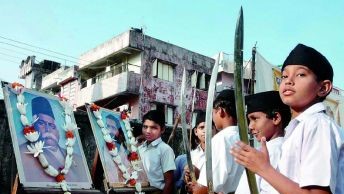
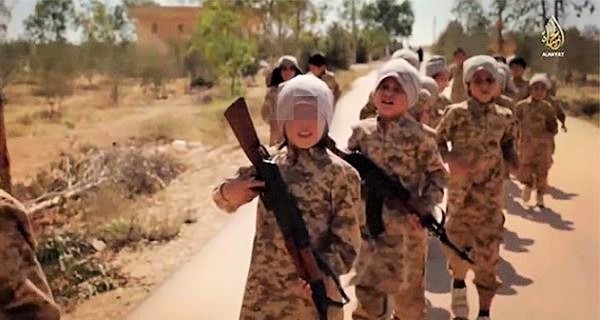
He agreed, when you are biased towards others, it affects your work performance. Your relationship with fellow workers will not be clean as you were poisoned against one or the other. You keep a reserve with your fellow worker and subconsciously you don’t trust and share everything with them. That attitude reduces your contribution to your work, and you will not be able to serve your employer with full integrity. And when you go home, you are not giving 100% to your family either, you are obsessed with your hatred towards the other.
Being an Indian-American, I have a substantial number of connections and interactions with Indians and Pakistanis. A majority of Indians or Pakistanis have no problems with the other, but a few of them are loaded with hatred for each other. They also hate each other’s religions, while they are alive, they jump at every opportunity to screw themselves with hate talk against Indians or Pakistanis and Muslims or Hindus. The worst thing they do is dump their sewage on to their children’s hearts. Thanks to America, most of the children born here reject the parents prejudices.
Let me share an often repeated story – Two Buddhist monks and a pregnant woman were waiting to cross a stream that was overflowing. After several hours of hopelessly waiting, the two decided to walk through the stream, the woman asked if one of them can carry her on their back to the other end. The monks looked at each other, they were not supposed to touch or feel a woman’s body, the senior monk decided to carry her anyway.
The senior monk dropped her on the other side of the stream, and as the two guys started walking, the junior questioned the senior. You were not supposed to feel the body of a woman and you did not set a good example, I was watching her body rub yours. The senior responded, “Look, I dropped that lady back there, but you are still carrying her on your mind. The few crappy Indians and Pakistanis and the few shitty Muslims and Hindus carry their baggage to the grave or the crematorium. How sad! They have a choice to be free from ill-will.
You can extricate yourselves from such misery, breathe, and live freely. The teens want to know how to tell their parents to take a hike and not dump their baggage on them.
Yesterday (October 31, 2019), on the way home, my daughter and I stopped at an Indian Store in Hyattsville to pick up a few food items.
In the check-out line, a guy asked me where I lived? I said, in South East DC. The guy had an attitude and questioned – 38th Street? I responded, no, Alabama and MLK- he gauged me up and down ( https://portofharlem.net/snippets19/sep252019-move-black.html ), and moved out before I could lecture him. Some of the Indians carry that ideology of caste superiority and judge you by where you live. I understand the pain of the Dalits in India who have endured humiliation for centuries. It is time to change all that in the hearts and minds of people.
If the immigrants carry that attitude, when the times get tough, they could be the target of the wrath of native Americans, meaning those who were born and raised here.
At the counter, my daughter asked the cashier if they have a Pakola, a soft drink she likes. The guy reluctantly responded, “that’s a Pakistani drink.” As if it were a sin to ask for Pakola in the Indian store. Most stores carry drinks from all over the world. Of course, he has a choice to carry the product, but why carry that stinky attitude? He should remember that he abandoned Indian Citizenship to the American, as most of the immigrants do, and I believe to enjoy the fullness of being American, we should keep our home-grown-pettiness back home.
My question to the Indian and Pakistani Americans is this: when you chose to be an American Citizen, were you honest about it? Did you shed the baggage of anti-each other?
During the High school days, a Pakistani kid in Richardson Square mall harassed my son for his Indianness. Like most other kids, my son called him a Paki, and it took several conversations between us for him to see the other as a fellow American. I did not know the other kid, otherwise, I would have talked to his parents. I did not want my kids to be biased against any human and thank God, and they have no prejudice against anyone. Let me add that I took them to every place of worship when they were kids, I wanted them to be open to people of all faiths including the LGBTQ community.
Whatever your heritage is, be it Israeli-Palestinian, English-French, Indian-Pakistani, Chinese-Taiwanese, Black-White, or anyone of the traditions from Atheism to Zoroastrianism, do you inject prejudices in your kids? You certainly can carry your prejudices to your grave, but please don’t poison your kids. You will be the loser; your kids will go along with you, but will not respect you and sometimes, will have nothing to do with you.
Remember, you are screwing up your child’s life in America, what if she/he has a chance to serve a branch of the US. Government, will he/she have the integrity to serve American interests to the best of the fair practices? Should your kid have the opportunity to be employed in such positions? What if an Indian American is appointed as an Ambassador or an envoy to Pakistan, or a Palestinian American is appointed to serve in Israel, will they carry the baggage their parents had dumped on them or do what is right for America?
Maybe we need to introduce a bill in the house, one must have a clean mind towards other people if they were to be employed in the government.
Becoming an American is to act in the interests of America. This can be applied in any country, the most important thing to understand is the freedoms: religion, speech, press, assembly, protest, and petition to the government. Each human should have the freedom to eat, drink, wear, believe whatever the hell he or she wants to do in the pursuit of his/her life, liberty, and happiness. Indeed, America’s prosperity hinges on such freedoms. There shall be no compulsion.
Let your child grow up as if he/she is going to run for the President of the United States and is willing to look to every American as a fellow American. Indeed, if we can learn to respect the otherness of the other and accept the (God/Genetic) uniqueness of each one of us, then conflicts fade and solutions emerge. Indeed, the Indian-American congressmen are representing American values and doing everything that an American should do. I particularly commend Congressman Ro Khanna and Congresswoman Pramila Jaypal, they are good role models for Indian American kids. I am sure the others are equally good, but I have not studied them to write about them.
The article can be republished, but please inform us when you do to Mike@Centerforpluralism.com
Link to this article – https://centerforpluralism.com/poisoning-your-kids/
Dr. Mike Ghouse is a thinker, author, speaker, newsmaker, and an interfaith wedding officiant. His new book American Muslim Agenda is available on Amazon. He is committed to building cohesive societies and offers pluralistic solutions on issues of the day. His information is linked-in.
Published at
https://countercurrents.org/2019/11/poisoning-your-children
RELATED ARTICLES
Poisoning your children – https://centerforpluralism.com/poisoning-your-children/
Poisoning your kids – https://centerforpluralism.com/poisoning-your-kids/
Reflection on Freedom – https://centerforpluralism.com/reflections-on-freedom-indias-independence-day/
